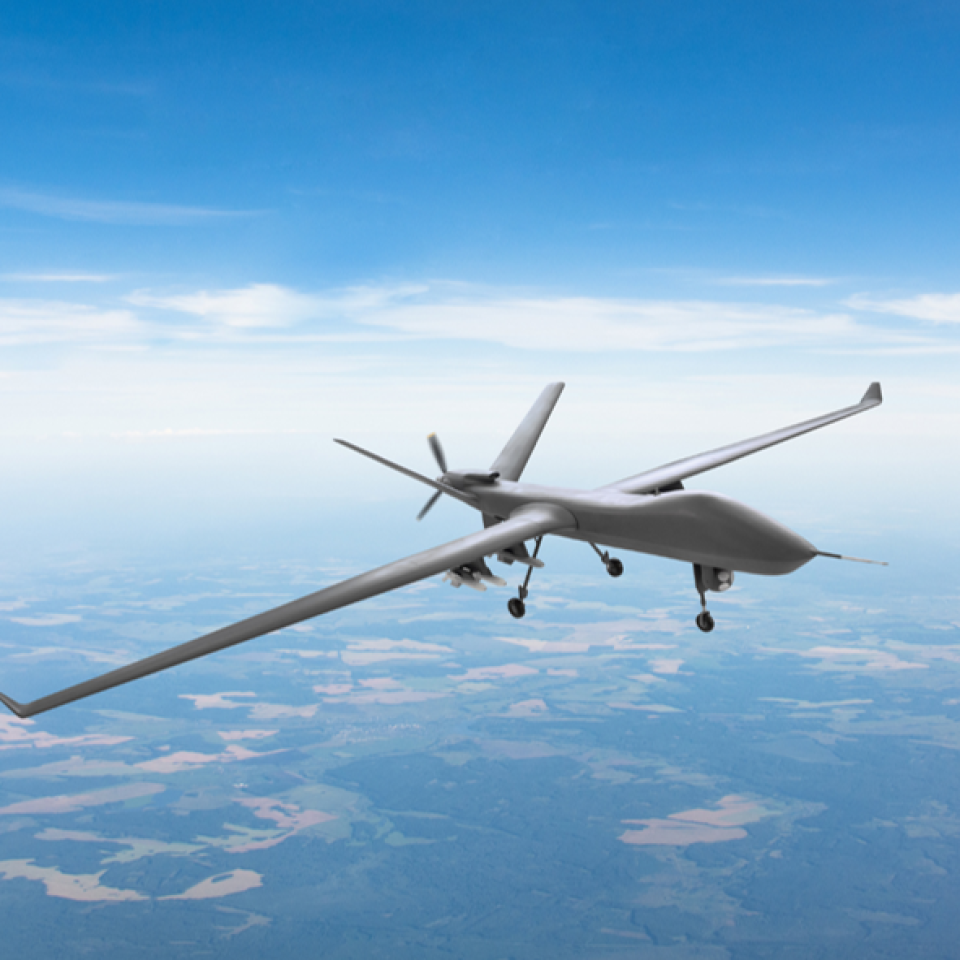
Developing an ultra-lightweight camera for high-altitude use
Researchers at Wrexham University have developed the first ultra-lightweight imaging and communications solution for the next generation of uncrewed high-altitude platform systems.
High-altitude platform systems (HAPS), also known as high altitude pseudo satellites - are a new generation of solar-powered, unmanned aircraft that fly higher than conventional drones but lower than satellites. They are used commercially and by the military for communication and observation in areas such as search and rescue, disaster relief, environmental monitoring and intelligence.
The Glyndŵr Innovations Ltd (GIL) research team at Wrexham University received funding from the UK Defence, Science and Technology Laboratory to design and manufacture a high-resolution camera that could be used on HAPS aircraft.
The team carried out their research in two phases. In phase one, they designed and made a “proof of concept” prototype using off-the-shelf and 3D-printed components. This demonstrated that it was possible to manufacture a camera that was light enough and small enough for the HAPS aircraft to carry, and that would not use too much power.
In phase two, the team developed the camera’s imaging capability to make sure it would perform effectively under very low operating temperatures at altitude and capable of withstanding the forces likely when the aircraft lands.
Through their research, the team created a design methodology for ultra-lightweight, high-resolution cameras for HAPS aircraft, along with manufacturing methods for these cameras.
As a result of the research team’s work, the UK is now able to design and manufacture high-tech cameras for use on HAPS aircraft. This has stimulated economic growth and led to further collaborations for the University, both across Wales and internationally.
This has included collaborations with:
- Ordnance Survey (OS) to develop prototype remote sensing equipment
- QinetiQ Ltd to develop high-tech cameras for use on their Zephyr HAPS aircraft
- Airbus Endeavr, a joint initiative between Airbus and the Welsh Government supporting innovation in Wales to establish a Welsh photonics supply chain – this collaboration developed a hyperspectral spectrometer (a device that collects and processes information from across the electromagnetic spectrum)
- Leicester University on the characterisation of suitable detectors for airborne and space borne instrumentation
- Airbus Defence and Space to further develop a hyperspectral spectrometer for use in the air and in space, with funding from the European Space Agency
- Archangel Lightworks Ltd, as part of a European Space Agency-funded project, to develop a space-to-ground communications system
Research team
Professor Paul Rees, Martin Coleman, Dr Martyn Jones and Dr John Mitchell – Wrexham University’s subsidiary company, Glyndŵr Innovations Ltd (GIL) – with the manufacturing support of GIL’s optical fabrication laboratory.
Research partners
Thomson Telescopes Ltd
